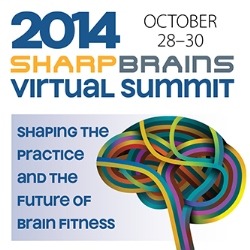Barbara Arrowsmith Young: Every kid should practice stress reduction and targeted cognitive exercises at school

Barbara Arrowsmith Young
What is your current job title and organization, and what excites you the most about working there?
As discussed in The Brain that Changes Itself and in my own book, The Woman Who Changed Her Brain, I launched the Arrowsmith Program, a suite of cognitive exercises–now in more that 60 schools–designed to strengthen weak cognitive areas that underlie a number of specific learning difficulties and disabilities.
I did so based on my journey to overcome my own severe specific learning difficulties, and what excites me now is working with a group of dedicated professionals with a shared vision of improving the lives of individuals struggling with learning difficulties. We want to help them become competent, confident independent life-long learners who dare to dream and have the cognitive resources to realize those dreams.
Please tell us about your interest in brain health and performance. What areas are you most interested in? What motivated you to pursue work in your field?
My motivation grew out of my personal struggle with severe learning difficulties. I did not see a future for myself so I set out on a quest to first discover the source of my problems, and then to determine a solution. In 1977 I came across the work of A.R. Luria through his book, The Man with a Shattered World, which helped me understand the source of my problems — specific parts of my brain were not functioning properly. Through Luria’s clinical descriptions I came to identify the nature of the problem. At the same time I was reading Mark Rosenzweig’s work demonstrating the brain’s ability to change physiologically and functionally as a result of environmental stimulation – neuroplasticity.
I took these two lines of research and combined them to create a series of cognitive exercises to stimulate my brain function in three distinct areas – reasoning, kinesthetic perception, and spatial awareness. As I experienced the positive outcomes of these exercises, I wanted to help others struggling as I had and the Arrowsmith Program was born — and it has grown a lot since.
I am most interested in exploring the territory of the human brain and in finding ways to apply what we learn to address even more areas that impact learning.
What is one important thing you are working on now, and where can people learn more about it?
Last year, Howard Eaton, Director of the Eaton Educational Group and author of Brain School, joined me in forming the Arrowsmith Program Research Team to work with researchers across North America and in Australia to design studies that analyze the brain-based, academic, cognitive, emotional and social outcomes that occur as students engage in our targeted cognitive exercises.
For example, both Dr. Lara Boyd at the University of British Columbia and Dr. Greg Rose at the University of Southern Illinois have began conducting brain imaging on students with specific learning difficulties undergoing our program, and a team from University of Calgary presented promising results last month at the American Psychological Convention in Washington, D.C. People can learn more here about these research initiatives.
What are 1–2 key things you’d like every person to understand about his/ her own brain and mind, that you think are commonly misunderstood?
The importance of reducing stress on brain health needs to be better appreciated. If people can do one thing a day to reduce stress –meditation, giving gratitude, walking in nature, getting a good night’s sleep–this has significant positive benefits on brain health and function.
Also I would encourage people to work on improving their cognitive abilities through continued practice – it is possible.
Where do you see clear “low-hanging fruit” to shape the future and the practice of brain fitness?
We need to continue to build awareness about the importance of keeping our brains fit and healthy across our whole lifespan. And we also need to show, through events and publications such as those produced by SharpBrains, how the best evidence can be applied in our daily lives. I believe we need to start this as soon as children enter school so that we help them become good stewards of their own brain health. Every child should devote part of the day engaging in healthy brain practices from stress reduction to targeted cognitive exercises.
What would you like the 2014 SharpBrains Virtual Summit to accomplish?
I’d like this year’s Summit to spark unexpected conversations and ideas around how new technologies and programs can be put to good use to help optimize the brain health and performance of large groups of people.
Finally, if I may…what do YOU do to stay sharp?
I walk briskly for 40 minutes a day several times a week, do breathing meditation, practice gratitude, try to focus on the positive, and keep my mind stimulated by tackling new problems and constantly challenging my assumptions.
 —This conversation is part of a new interview series with Sponsors & Speakers @ 2014 SharpBrains Virtual Summit (October 28–30th). You can register with a 10% discount using promotional code: sharp2014. Please join us!
—This conversation is part of a new interview series with Sponsors & Speakers @ 2014 SharpBrains Virtual Summit (October 28–30th). You can register with a 10% discount using promotional code: sharp2014. Please join us!


